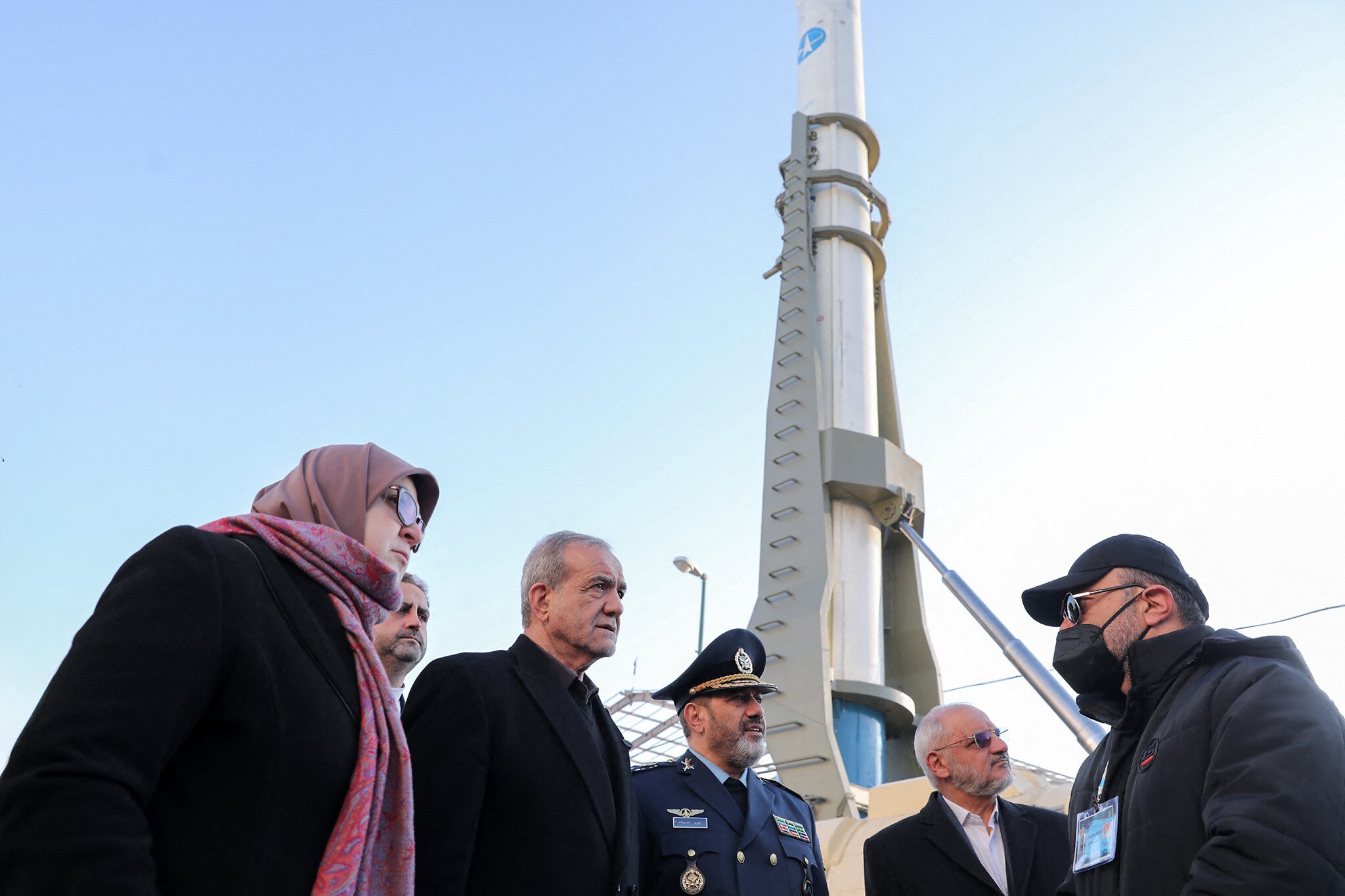



Iran revealed a new ballistic missile on Sunday that it said was capable of traveling 1,700 kilometers (1,056 miles), unveiling it in a Tehran ceremony attended by President Masoud Pezeshkian.
State television broadcast images of the missile, dubbed Etemad, or “trust” in Persian, saying it was “the most recent ballistic missile” built by the Iranian defense ministry.
Western countries have grown concerned over advances in Iran’s ballistic missile program, accusing it of destabilizing the Middle East.
Iran’s missiles, including this newest design, are capable of reaching Israel, which it targeted twice last year as the Gaza war, started by Iran-backed Palestinian terror group Hamas, spilled over. Both attacks, which involved hundreds of ballistic missiles, were largely thwarted by Israel’s air defense systems in cooperation with the US and its regional allies.
“The development of defense capabilities and space technologies… aims to ensure that no country dares to attack Iranian territory,” Pezeshkian said in a televised address.
The ceremony took place on Iran’s national aerospace day and a few days before the 46th anniversary of the creation of the Islamic Republic on February 10, 1979.
Since the return of US President Donald Trump — who pursued a “maximum pressure” approach to Iran in his first term — Tehran has made multiple shows of force, including large-scale military exercises and the presentation of underground military bases.
At the same time, Tehran has signaled its willingness to restart negotiations over its nuclear program, which has been the subject of tensions with Western countries for decades.
During his first term, Trump pulled the US out of a nuclear pact between Iran and world powers that curbed its nuclear program in return for sanctions relief, saying it did not go far enough to prevent Tehran from producing a weapon. Though Iran claims its program is peaceful, it has enriched uranium to levels that the UN’s atomic watchdog says are reached by countries seeking to make a bomb. In December, the UK, France, and Germany said there is no “credible civilian justification” for Iran’s enrichment.
Iran has repeatedly vowed to destroy Israel. Israel sees a nuclear-armed Iran as an existential threat and has indicated it could act alone in striking Iran’s nuclear facilities if needed.
Iran, which once sourced the majority of its military equipment from its then-ally the United States, has been forced to develop its own weaponry since Washington cut off ties and imposed sanctions in the wake of the 1979 Islamic Revolution.
Having been under an arms embargo during a devastating war with Iraq between 1980 and 1988, Iran now has a substantial arsenal of domestically developed weapons, including missiles, air defense systems, and drones.
The new ballistic missile announcement came the day after Iran showed off a new underground missile facility on the south coast and two weeks after unveiling an underground naval base.
